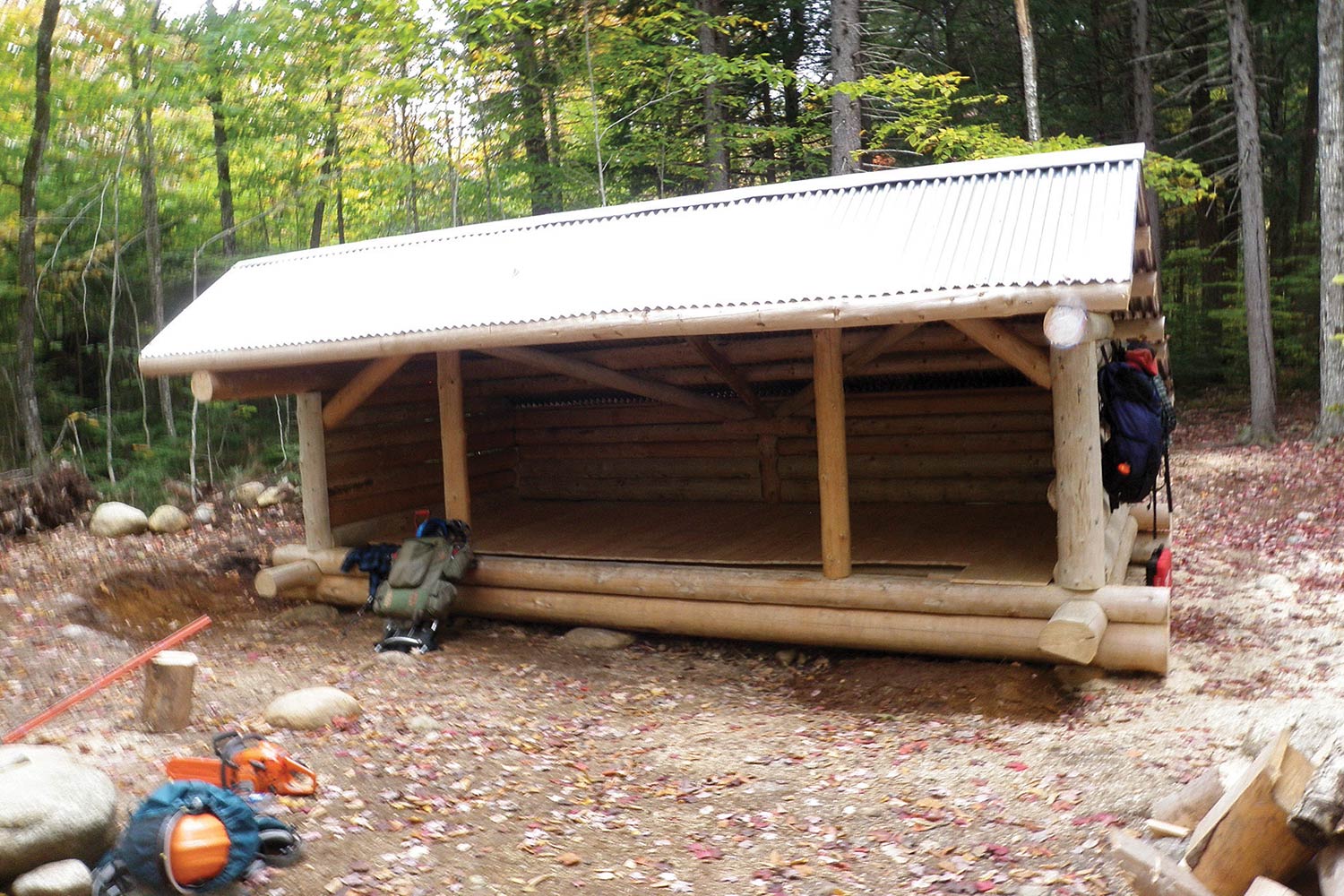
New
Nahmakanta Stream Lean-to Encourages Sustainable Camping
New
Nahmakanta Stream Lean-to Encourages Sustainable Camping
By Lester C. Kenway

The new Nahmakanta stream lean-to is ready for use. ![]() Photo by Lester Kenway
Photo by Lester Kenway
The Maine Appalachian Trail Club’s newest lean-to was finished on October 14, 2017. Nineteen MATC members volunteered 1,239 hours to this project from June 2016 to October 2017. Nine weekend trips were made to complete the construction of the Lean-to.
The lean-to is designed to accommodate eight hikers per night. The overall plan for the lean-to was adopted from the Horseshoe Canyon Lean-to, built in 1991. This is the first lean-to on the A.T. in Maine to feature a transfer platform for disabled hikers where a portion of the bunk is extended to the front of the deacon seat, in compliance with modern day accessibility standards.
The new Nahmakanta stream lean-to is ready for use. ![]() Photo by
Photo by
Lester Kenway
The Maine Appalachian Trail Club’s newest lean-to was finished on October 14, 2017. Nineteen MATC members volunteered 1,239 hours to this project from June 2016 to October 2017. Nine weekend trips were made to complete the construction of the Lean-to.
The lean-to is designed to accommodate eight hikers per night. The overall plan for the lean-to was adopted from the Horseshoe Canyon Lean-to, built in 1991. This is the first lean-to on the A.T. in Maine to feature a transfer platform for disabled hikers where a portion of the bunk is extended to the front of the deacon seat, in compliance with modern day accessibility standards.
The lean-to is located near the Nahmakanta Stream Campsite that was established in 1996. You can reach the lean-to via a three-mile hike south of Nahmakanta Lake. This site was chosen back then noting that a nearby stand of spruce trees was available for building a lean-to sometime in the future.
During the construction of the lean-to we noted that the campsite was heavily used, with up to 20 people pitching tents each night. We hope that the new lean-to will attract hikers that might otherwise stay at unauthorized campsites close to the stream.
On most sections of the A.T., you have two potential choices for camping: staying in a shelter or pitching a tent. Backcountry camping is available at about 100 designated camp sites and is also allowed in the immediate vicinity of most of the 250 shelters along the Trail. In some areas, you can choose your own campsite (called dispersed camping), but hikers are always encouraged to use designated sites even when you can legally choose your own, so please check local regulations and recommendations. Using designated campsites means you will have fewer impacts on vegetation and wildlife habitat and will keep the Trail corridor looking natural and pristine.
Lester Kenway is the president of the Maine Appalachian Trail Club. For more information about camping on the A.T. visit: appalachiantrail.org/camping and ATCAMP.org